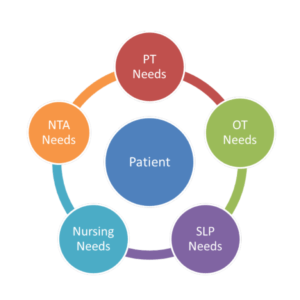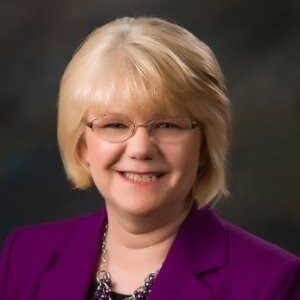Turning a blind eye to the rules
The regulatory environment in long-term care has become quite hostile in the past decade, and the decrease in new applications for licensure as nursing home administrators has been just one of the results.1 Additionally, "more than 7,000 NHAs will walk out of their job this year, as they did last year and the year before,"2 heralding an industry in crisis. The current state of affairs serves to shine a spot light on the inconsistent and capricious process that has come to be known as the "survey" which all skilled
Qualifications of a LTC activity program directorThe activities program must be directed by a qualified professional who– (i) Is a qualified therapeutic recreation specialist or an activities professional who– (A) Is licensed or registered, if applicable, by the State in which practicing; and (B) Is eligible for certification as a therapeutic recreation specialist or as an activities professional by a recognized accrediting body on or after October 1, 1990; or (ii) Has 2 years of experience in a social or recreational program within the last 5 years, 1 of which was full-time in a patient activities program in a health care setting; or (iii) Is a qualified occupational therapist or occupational therapy assistant; or (iv) Has completed a training course approved by the State. Source: Sec. 483.15(f)(2)–(f-249) |
nursing facilities must endure on at least an annual basis.
Research tells us that activities provided in skilled nursing facilities (SNFs) are strongly related to residents' perceptions of quality of life. We conducted a study to learn about best practices related to provision of activities in America's nursing homes, for the adoption of best practices results in increased quality of care.
We sent surveys to 2,076 SNFs that had received deficiencies at F-248 between the years of 2009 and 2011. Although we invited 2076 to participate in our study, only 158 facilities chose to participate. Of those 158 SNFs that received deficiencies at F-248, a total of 30 did not have an activity director who met the criteria for activity directors found at F-249 (see sidebar).
However, only one of those 30 facilities was cited at F-249 for failing to employ a qualified individual to head the program of activities, consistent with the requirements at F-249. To state it in terms of percentages, nearly 16 percent of the nursing homes that responded to our survey did not employee a qualified activities director.
WHAT THE REGULATION DICTATES
In the "determination of compliance" portion of the investigative protocol which accompanies F-248, the surveyor is instructed to "determine if a qualified activities director is directing the activities program" if concerns are identified during the survey relating to "outcome, process and/or structure requirements" of the activity program."3 The regulation further cautions the surveyor to "investigate these related requirements before determining whether noncompliance may be present."4 Clearly, in cases where deficiencies are being issued at F-248, a concern must have been identified that relates to activity programming. Yet, in 29 out of 30 cases, surveyors failed to discover that the facility employed an individual who was not qualified as per the requirements at F-249.
WHY IS IT AN ISSUE?
One of the major issues is the fact the survey process is so disjointed and inconsistent. One year, a survey team can enter a facility and find "deficiencies" that they deem problematic; but the following year, the same group may return to the facility and find a litany of other issues that existed during their last five or 10 annual visits, which the team (or other survey teams for that matter) never had a problem with. Many administrators have complained that some of the biggest issues in the survey process are the lack of objectivity and how the deficiency citations seem to be dependent on the "flavor du jour" of the survey team. Seasoned administrators and directors of nursing know all too well that this is a fact of working in long-term care during survey time.
Several governmental agencies have also taken notice of this problem. Studies undertaken by the General Accounting Office (GAO) have identified inconsistencies in the survey process5,6, and despite considerable rhetoric7, few definitive approaches seem to have mitigated the problem.
The failure to follow the survey protocol is in diametric opposition to the very intent of the Omnibus Budget Reconciliation Act of 1987 (OBRA '87), which mandated training and certification for activity directors. Credentialing is a process used to assure that those individuals who practice in a given field have at least a minimum level of knowledge, skill and ability in a given field of endeavor. In short, credentialing attempts to safeguard the public from incompetent practice.
Based on the fact that 16 percent of the facilities that responded to our questionnaire did not employ an activity director who met the requirements at F-249, we cannot help but wonder how many of the 1,918 non-responding SNFs that received deficiencies at F-248 between the years 2009 and 2011 also failed to meet the requirements at F-249. Assuming that our sample is representative of the queried population, we could project that approximately 332 facilities receiving deficiencies F-248 between the years 2000 and 2011 also did not employ a qualified activity director. Stated more bluntly, if the surveyors did their job, would fewer residents have been affected by deficient practices at F-248?
CONCLUSION
It is not our intent to advocate additional deficiencies for America's SNFs. But we certainly do advocate fair and uniform application of the survey process. If SNFs are expected to apply federal and state rules and regulations to the care of the elderly in America's nursing homes without deviation, then why shouldn't surveyors be required to adhere to those same rules/regulations and survey protocols—especially in areas that directly affect the residents’ quality of life? We also advocate the spirit of OBRA '87 that requires appropriately trained professionals to provide the services offered in SNFs. Frankly, our residents deserve it.
Sharon A. Nazarchuk, PhD, MA, MHA, RN, is Professor and Chair, Sociology Department, Lackawanna College, Scranton, Pa.
 Timothy J. Legg, PhD, CRNP, CNHA, CTRS, FACHCA, is Professor of Nursing at Kaplan University School of Nursing. He is also a nurse practitioner employed by Matthew Berger MD, PC, Moosic, Pa. He also serves as a long-term care consultant with Gerber Consulting Services, Inc., Clymer, Pa.
Timothy J. Legg, PhD, CRNP, CNHA, CTRS, FACHCA, is Professor of Nursing at Kaplan University School of Nursing. He is also a nurse practitioner employed by Matthew Berger MD, PC, Moosic, Pa. He also serves as a long-term care consultant with Gerber Consulting Services, Inc., Clymer, Pa.
REFERENCES
1. Pratt, J. R. (2002, April). The disappearing administrator: Results of a national survey. Nursing Homes and Long Term Care Management, 24-29.
2. Tellis-Nayak, V. (2007, October). Disenchantment among LTC leaders and its toll on quality. Nursing Homes and Long Term Care Management.
3. Centers for Medicare & Medicaid Services. State Operations Manual Appendix PP—Guidance to Surveyors For Long-Term Care Facilities. (Revision 70), January 7, 2011. Pages 100-101. Retrieved from www.cms.gov/manuals/Downloads/som107ap_pp_guidelines_ltcf.pdf.
4. Centers for Medicare & Medicaid Services. State Operations Manual Appendix PP—Guidance to Surveyors For Long-Term Care Facilities. (Revision 70), January 7, 2011. Page 100. Retrieved from www.cms.gov/manuals/Downloads/som107ap_pp_guidelines_ltcf.pdf.
5. United States Government Accountability Office. (2008, May). Federal monitoring surveys demonstrate continued understatement of serious care problems and CMS oversight weaknesses. Retrieved from www.gao.gov/new.items/d08517.pdf
6. Office of the Inspector General. (2003, March). Nursing home deficiency trends and survey and certification process consistency. Retrieved from https://oig.hhs.gov/oei/reports/oei-02-01-00600.pdf
7. United States Government Accountability Office. (2009, November). Addressing the factors underlying understatement of serious care problems requires sustained CMS and state commitment. Retrieved from www.gao.gov/new.items/d1070.pdf
I Advance Senior Care is the industry-leading source for practical, in-depth, business-building, and resident care information for owners, executives, administrators, and directors of nursing at assisted living communities, skilled nursing facilities, post-acute facilities, and continuing care retirement communities. The I Advance Senior Care editorial team and industry experts provide market analysis, strategic direction, policy commentary, clinical best-practices, business management, and technology breakthroughs.
I Advance Senior Care is part of the Institute for the Advancement of Senior Care and published by Plain-English Health Care.
Related Articles
Topics: Articles , Executive Leadership , Medicare/Medicaid , Regulatory Compliance









